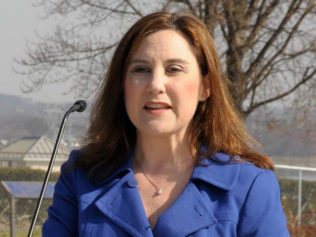
In a nation where how you live and where you live determine how close you get to the American Dream—dictating the kinds of schools your children attend, the peers they will attend with, the recreational activities they have available to them, even the spaces that are carved out for them to do their homework— this crisis has devastated the Black middle-class in ways that still have yet to be determined.
In all, the last decade has represented one of the most astounding manifestations of systemic racism in generations.
We may not know the full extent of the devastation until this generation of children who are watching it all unfold, witnessing a collapse of their families’ quality of life, grow into a generation of adults who may struggle to reach their full potential.
It seems that every few months, researchers, housing advocates or media publications kick out another report tracking the destruction of yet another community. The latest came from the Washington Post over the weekend, in a story that meticulously details the unbelievable damage the foreclosure crisis did to a lovely subdivision in Prince George’s County, Maryland, where Black people previously lived well, in beautiful, showcase homes.
Prince George’s is the wealthiest majority-Black county in the United States, so this is the place the nation’s news media tends to go to track the state of the Black middle class. The Post assessed the damage that foreclosures had done in a subdivision called Fairwood, a sprawling 1,800-home subdivision in Prince George’s County built on a former slave plantation that was once owned by the state’s 34th governor, Oden Bowie.
The subdivision is just 10 years old, is 73 percent Black, and the U.S. census says its residents have a median household income of more than $170,000. There were houses in Fairwood that sold for more than $1 million.
But half the loans on newly constructed homes in Fairwood during the housing boom in 2006 and 2007 have wound up in foreclosure—an astounding 723 of 1,441 so far, according to the Post analysis.
On some blocks in Fairwood, nearly every house succumbed to foreclosure, resulting in a neighborhood that was devoured by the virus—families whose lives were transformed for the worse as they downsized, sought out rental units in less desireable neighborhoods, with less effective schools.
According to the Post, the African-American share of the population in Prince George’s has begun to decline for the first time since the civil rights movement.
While the foreclosure crisis has displaced about 10 million people from more than four million homes across the country since 2007, according to published reports—adding up to approximately the entire population of the state of Georgia—Blacks were disproportionately affected because Black neighborhoods were targeted more aggressively than others for the predatory loans that led to mass evictions after the economic meltdown of 2007-2008. One study found that at the height of the housing boom, nearly half of all loans given to African-American families were deemed “subprime.”
Nationwide, approximately one quarter of all Latino and African-American borrowers have lost their homes to foreclosure or are seriously delinquent, compared to just under 12 percent for white borrowers. More than 240,000 Blacks lost their homes, with high-earning Blacks 80 percent more likely to lose their homes than their white counterparts.
The Center for Responsible Lending determined that during the housing boom, just 6.2 percent of whites with a credit score of 660 and higher received high-interest mortgages, compared to 21.4 percent of Blacks with a score of 660 or higher receiving these same loans.
As government officials delved into the lending practices of the huge banks, they found evidence of breathtaking racism. Loan officers at Wells Fargo called the subprime loans “ghetto loans” and referred to their Black customers as “mud people,” according to court testimony. In some places there was a cash incentive for loan officers to aggressively market subprime mortgages in minority neighborhoods. Black women were specifically targeted for subprime loans—upper-income Black women were nearly five times more likely to receive subprime purchase mortgages than upper-income white men.
The result of this chilling display of racism by the banking industry was that while the wealth of U.S. families overall was reduced by 28.5 percent, for Blacks the decline was an incredible loss of 47.6 percent, according to a report by the Urban Institute. Researchers from the Pew Research Center found that from 2005 to 2009, the net worth of Black households declined by 53 percent while the net worth of white households declined by 16 percent.
In Lee County, North Carolina, Kevin Kirkman, captain of the civil division of the Lee County sheriff’s office, who has the job of carrying out the eviction notices, told a reporter, “I get so many [eviction] papers in here, it’s unbelievable.”
He explained the ripple effect of all the foreclosures, quoted in a piece that appeared in Mother Jones. “You’re talking about a mudslide where a lot of things are affected. You’re talking about taxes, about retail sales if people move, about food services, about gasoline,” he said. “You see what I’m talking about? When you lose a family in the community? Some people leave the community. I have seen people leave the state of North Carolina.”
He added, “I’m going to be honest with you. My feeling is that I would not do these evictions.”
“Internal displacement causes conflict,” said J.R. Fleming, the chairman of the Chicago Anti-Eviction Campaign. “And there’s no other country in the world that would force so much internal displacement and pretend that it’s something else.”


